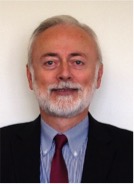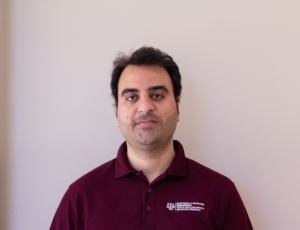The webinar titled “Asset Management in Distribution Systems with Distributed Renewable Generation” will be presented by Miroslav Begovic, Ph.D. (Moore Professor and Department Head, Electrical and Computer Engineering, TAMU) and Aaqib Peerazada (Ph.D. Candidate and Teaching Fellow, Electrical and Computer Engineering, TAMU) on zoom at 2 P.M. CST on February 16, 2022.
Abstract
Texas residential energy consumption is on average 77 million Btu per year, whereas average electricity consumption per Texas home is 26% higher than the national average. Growth trends of consumption and reduction of heavy polluter generation, like coal, are driving the growth of other sources. Renewable capacity is expected to account for nearly 95 percent of the increase in global energy capacity between now and 2026, with solar power driving 60 percent of this growth. Texas was second largest state in the nation in growth of net solar generation between 2011 and 2020, with an increase of over 12,000 percent. Texas currently has 7,120 MW of solar power, 28,215 MW of wind power, and 833 MW of battery storage capacity, with both battery storage and solar power expected to more than double in capacity by the end of 2022. Further growth is expected to accelerate these trends. With so much new, small capacity generation installed across distribution networks, the aging infrastructure is going to be strained even more rapidly. The presentation will focus on two asset management/replacement strategies, one that applies to traditional distribution assets (underground cables) and another, driven by the changes in operation in solar-PV-heavy distribution networks. We will provide a brief overview of the changes in technologies and practices which are expected to occur and will rely on the results of some of the projects that the presenters have developed in recent years, especially a few ongoing projects.
Biographies
 Miroslav M. Begovic (FIEEE’04) is Department Head of Electrical and Computer Engineering and the Moore Professor at Texas A&M University. Prior to that, he was Professor and Chair of the Electric Energy Research Group in the School of Electrical and Computer Engineering, and an affiliated faculty member of the Brook Byers Institute for Sustainable Systems and University Center of Excellence in Photovoltaic Research at Georgia Institute of Technology. For the Centennial Olympic Games in 1996 in Atlanta, Drs. Begovic and Rohatgi designed and oversaw construction of a 340 kW PV system on the roof of Aquatic Center at Georgia Tech, the largest roof-mounted PV system in the world at the time. Prof. Begovic has been a member of the IEEE PES Power System Relaying Committee for two decades and chaired a number of its working groups. Dr. Begovic delivered over 100 keynote and invited presentations worldwide. Dr. Begovic, a Fellow of IEEE and recipient of the IEEE PES 2019 Meritorious Service Award, served as Chair of the Emerging Technologies Coordinating Committee of IEEE PES, IEEE PES Treasurer (2010-2011), IEEE PES Distinguished Lecturer, and served as President-Elect, President and Immediate Past President of the IEEE Power and Energy Society (2012-2018).
Miroslav M. Begovic (FIEEE’04) is Department Head of Electrical and Computer Engineering and the Moore Professor at Texas A&M University. Prior to that, he was Professor and Chair of the Electric Energy Research Group in the School of Electrical and Computer Engineering, and an affiliated faculty member of the Brook Byers Institute for Sustainable Systems and University Center of Excellence in Photovoltaic Research at Georgia Institute of Technology. For the Centennial Olympic Games in 1996 in Atlanta, Drs. Begovic and Rohatgi designed and oversaw construction of a 340 kW PV system on the roof of Aquatic Center at Georgia Tech, the largest roof-mounted PV system in the world at the time. Prof. Begovic has been a member of the IEEE PES Power System Relaying Committee for two decades and chaired a number of its working groups. Dr. Begovic delivered over 100 keynote and invited presentations worldwide. Dr. Begovic, a Fellow of IEEE and recipient of the IEEE PES 2019 Meritorious Service Award, served as Chair of the Emerging Technologies Coordinating Committee of IEEE PES, IEEE PES Treasurer (2010-2011), IEEE PES Distinguished Lecturer, and served as President-Elect, President and Immediate Past President of the IEEE Power and Energy Society (2012-2018).
 Aaqib Peerzada received his BS in Electrical Engineering from National Institute of Technology, Srinagar, India in 2011 and M.S in Electrical Engineering from Texas A&M University, College Station in 2018. He served as an operational and design engineer for NTPC Ltd, one of the largest generation utilities in the world for over three years. Currently, Mr. Aaqib is a Teaching Fellow in the ECE department and a Ph.D. candidate under the supervision of Prof. Begovic, in collaboration with the REAPER Lab. His research interests include Decision Making under Uncertainty in Energy Systems, wide area control and protection, DER integration and resilient energy infrastructures
Aaqib Peerzada received his BS in Electrical Engineering from National Institute of Technology, Srinagar, India in 2011 and M.S in Electrical Engineering from Texas A&M University, College Station in 2018. He served as an operational and design engineer for NTPC Ltd, one of the largest generation utilities in the world for over three years. Currently, Mr. Aaqib is a Teaching Fellow in the ECE department and a Ph.D. candidate under the supervision of Prof. Begovic, in collaboration with the REAPER Lab. His research interests include Decision Making under Uncertainty in Energy Systems, wide area control and protection, DER integration and resilient energy infrastructures
